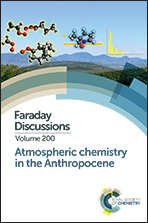Clean air in the Anthropocene
Abstract
In atmospheric chemistry, interactions between air pollution, the biosphere and human health, often through reaction mixtures from both natural and anthropogenic sources, are of growing interest. Massive pollution emissions in the Anthropocene have transformed atmospheric composition to the extent that biogeochemical cycles, air quality and climate have changed globally and partly profoundly. It is estimated that mortality attributable to outdoor air pollution amounts to 4.33 million individuals per year, associated with 123 million years of life lost. Worldwide, air pollution is the major environmental risk factor to human health, and strict air quality standards have the potential to strongly reduce morbidity and mortality. Preserving clean air should be considered a human right, and is fundamental to many sustainable development goals of the United Nations, such as good health, climate action, sustainable cities, clean energy, and protecting life on land and in the water. It would be appropriate to adopt “clean air” as a sustainable development goal.
- This article is part of the themed collection: Atmospheric chemistry in the Anthropocene

 Please wait while we load your content...
Please wait while we load your content...